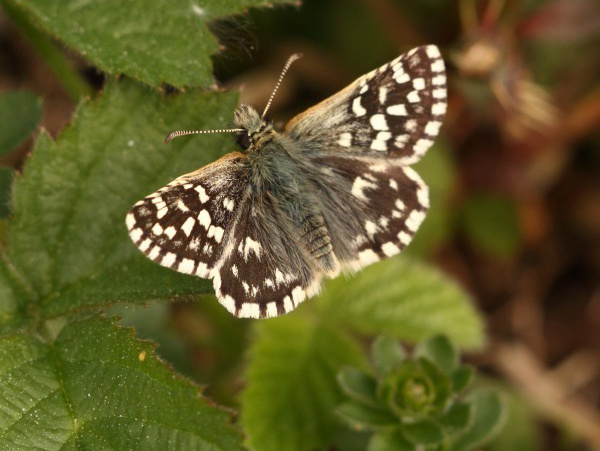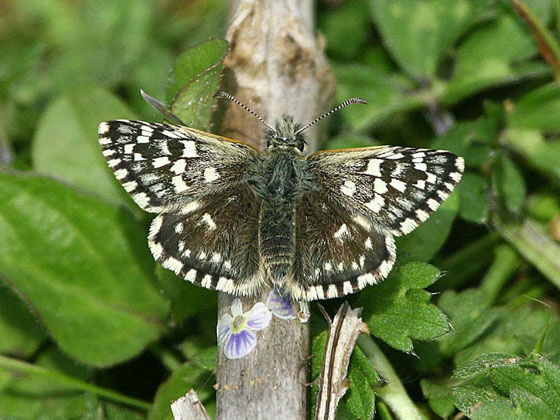
| Butterfly Conservation |
 |
| Hertfordshire & Middlesex Branch |
 |
|
|||
| Saving butterflies, moths and our environment | ||||


Grizzled SkipperPyrgus malvaeRestricted rare resident Distribution and Status In the 1980s most colonies appeared to be concentrated in central eastern Hertfordshire and around Tring but now have been lost probably due to their habitats being overgrown. However, new colonies were discovered at Waterford Heath and Rickneys Quarry at the end of the last century and are now two of the best sites in our branch area along with Aldbury Nowers Habitat Requirements The Grizzled Skipper favours sheltered spots on flower-rich grassland on chalk slopes, roadside verges, woodland clearings, railway embankments, gravel pits and brownfield sites Larval Foodplants Wild Strawberry Fragaria vesca, Agrimony Agrimonia eupatoria, Creeping Cinquefoil Potentilla reptans. Barren Strawberry P. sterilis, Tormentil P. erecta, Silverweed P. anserina, Raspberry Rubus idaeus and Bramble R. fruticosus are also sometimes used Adult Food Sources Common Birds-foot Trefoil Lotus corniculatus, Dandelion Taraxacum sp. , Buttercup Ranunculua sp. Behaviour/Observation notes Grizzled Skippers are active throughout the day when the sun is out and their rapid flight makes them hard to follow over vegetation. Look out for bare patches or areas of very short grass on which they may settle to bask or yellow flowers on which they will take nectar. It can be confused with the Mother Shipton moth which is similar in colouring and size and inhabits the same places Life History The first specimens usually emerge by the middle of April with the flight period extending until the middle of June with a peak around the second week of May. Eggs are laid on the underside of a leaf in warm situations, next to bare patches, for example. On emergence, the larva constructs a web across the midrib of a leaf on which it feeds. When fully grown, it builds a cocoon within which the pupa is formed at the base of the vegetation. The pupal stage lasts about 9 months including the winter Further information
Identifying Skippers |
Copyright Butterfly Conservation © 2019 Hertfordshire & Middlesex Branch
Privacy and Copyright Statement and Cookie Policy Statement
Butterfly Conservation
Company limited by guarantee, registered in England (2206468)
Registered Office: Manor Yard, East Lulworth, Wareham, Dorset, BH20 5QP. Tel: 01929 400 209
Charity registered in England & Wales (254937) and in Scotland (SCO39268). VAT No. GB 991 2771 89